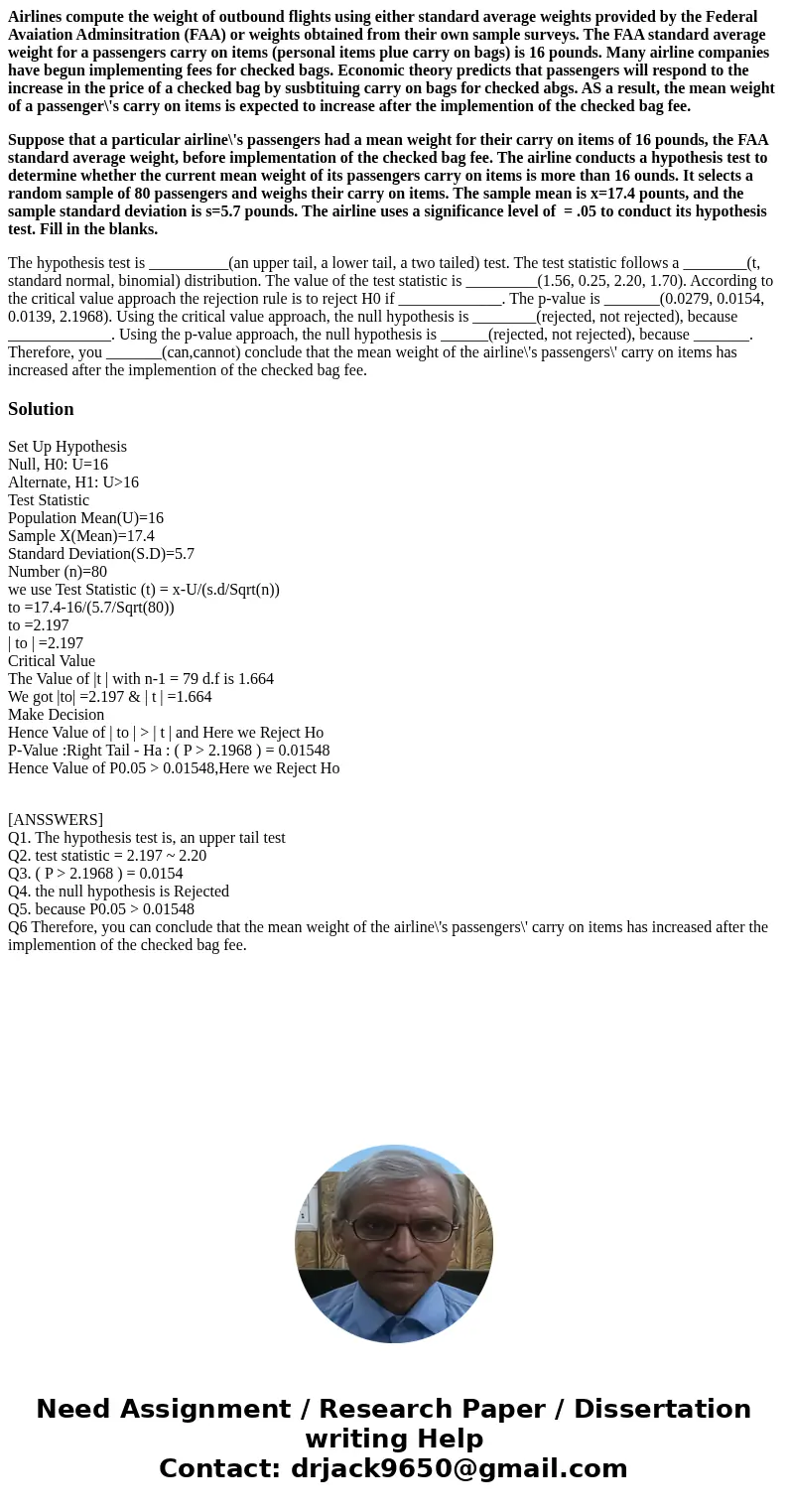Airlines compute the weight of outbound flights using either
Airlines compute the weight of outbound flights using either standard average weights provided by the Federal Avaiation Adminsitration (FAA) or weights obtained from their own sample surveys. The FAA standard average weight for a passengers carry on items (personal items plue carry on bags) is 16 pounds. Many airline companies have begun implementing fees for checked bags. Economic theory predicts that passengers will respond to the increase in the price of a checked bag by susbtituing carry on bags for checked abgs. AS a result, the mean weight of a passenger\'s carry on items is expected to increase after the implemention of the checked bag fee.
Suppose that a particular airline\'s passengers had a mean weight for their carry on items of 16 pounds, the FAA standard average weight, before implementation of the checked bag fee. The airline conducts a hypothesis test to determine whether the current mean weight of its passengers carry on items is more than 16 ounds. It selects a random sample of 80 passengers and weighs their carry on items. The sample mean is x=17.4 pounts, and the sample standard deviation is s=5.7 pounds. The airline uses a significance level of = .05 to conduct its hypothesis test. Fill in the blanks.
The hypothesis test is __________(an upper tail, a lower tail, a two tailed) test. The test statistic follows a ________(t, standard normal, binomial) distribution. The value of the test statistic is _________(1.56, 0.25, 2.20, 1.70). According to the critical value approach the rejection rule is to reject H0 if _____________. The p-value is _______(0.0279, 0.0154, 0.0139, 2.1968). Using the critical value approach, the null hypothesis is ________(rejected, not rejected), because _____________. Using the p-value approach, the null hypothesis is ______(rejected, not rejected), because _______. Therefore, you _______(can,cannot) conclude that the mean weight of the airline\'s passengers\' carry on items has increased after the implemention of the checked bag fee.
Solution
Set Up Hypothesis
Null, H0: U=16
Alternate, H1: U>16
Test Statistic
Population Mean(U)=16
Sample X(Mean)=17.4
Standard Deviation(S.D)=5.7
Number (n)=80
we use Test Statistic (t) = x-U/(s.d/Sqrt(n))
to =17.4-16/(5.7/Sqrt(80))
to =2.197
| to | =2.197
Critical Value
The Value of |t | with n-1 = 79 d.f is 1.664
We got |to| =2.197 & | t | =1.664
Make Decision
Hence Value of | to | > | t | and Here we Reject Ho
P-Value :Right Tail - Ha : ( P > 2.1968 ) = 0.01548
Hence Value of P0.05 > 0.01548,Here we Reject Ho
[ANSSWERS]
Q1. The hypothesis test is, an upper tail test
Q2. test statistic = 2.197 ~ 2.20
Q3. ( P > 2.1968 ) = 0.0154
Q4. the null hypothesis is Rejected
Q5. because P0.05 > 0.01548
Q6 Therefore, you can conclude that the mean weight of the airline\'s passengers\' carry on items has increased after the implemention of the checked bag fee.

 Homework Sourse
Homework Sourse